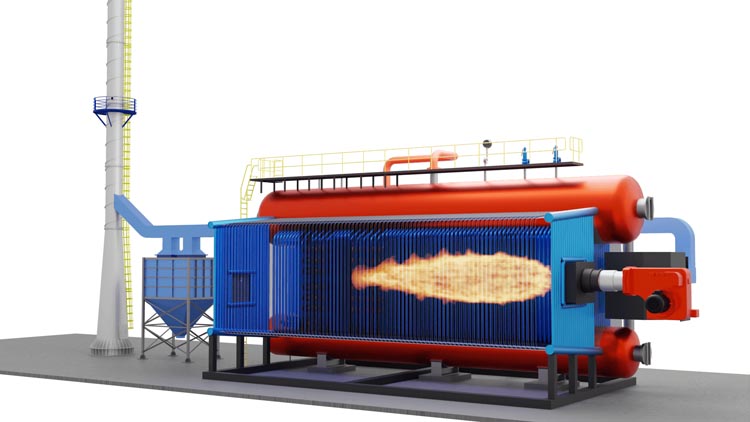

Water Tube Boilers
Features of Water Tube Boilers
I. High Efficiency: Water tube boilers can achieve efficiency levels of up to 95% when designed properly. These boilers ensure the most efficient use of energy, resulting in fuel savings.
II. Safe Operation: The boiler's water volume consists of tubes and drums. This design minimizes the risk of explosions since water tube boilers do not contain large water volumes. As a result, they can operate safely at high pressures.
III. Rapid Steam Generation: Water tube boilers have the ability to rapidly produce steam. This feature allows them to easily meet high flow rates and pressure requirements without any strain. It enables quick fulfillment of energy demands.
IV. Long Economic Lifespan: Water tube boilers have a significantly long economic lifespan when operated with appropriate conditions and required features. By utilizing high-quality materials and regular maintenance, these boilers can provide reliable service for many years.
Water tube boilers stand out with their high efficiency, safe operation, rapid steam generation capability, and long economic lifespan. These features make them preferred choices for energy generation and heating systems in industrial facilities. Water tube boilers operate in an environmentally friendly manner, promoting energy savings and reducing costs in the long run.
Water tube boilers are devices that produce steam by utilizing the principle of thermal energy and vaporization in water. They are widely used in industrial applications, energy generation, and heating systems. These boilers are preferred due to their high efficiency, durability, and low emissions.
Water tube boilers with capacities ranging from 30 t/h to 150 t/h can be designed in accordance with EN12952, ASME Section-I, or other standards specified by customers. These standards define the requirements for design, manufacturing, and operation processes, ensuring safety, performance, and quality.
Water tube boilers heat water by coming into contact with hot gases or combustion products inside the tubes. The structural features of these boilers are carefully designed to enhance efficiency and safety. They typically consist of a series of tubes, including one or more flue tubes and water tubes. The combustion chamber, located at the core of the boiler, contains the hot gases generated by fuel combustion.
EN12952 and ASME Section-I are commonly used standards that regulate the design, material selection, manufacturing, and testing processes of water tube boilers. These standards impose strict requirements to ensure that the boilers are sturdy, safe, and high performing. Compliance with other standards can also be achieved based on customer requirements.
Water tube boilers are commonly used for energy generation in industrial facilities. They find widespread applications in power plants, refineries, chemical plants, paper mills, and food processing plants. Known for their high-pressure steam generation and continuous operation capabilities, these boilers are recognized for their performance.
Water tube boilers can be designed to meet specific capacity and feature requirements of customers. The use of high-quality materials during the manufacturing process ensures durability and performance of the boilers. Additionally, emphasis is placed on energy efficiency and emission control, optimizing designs to minimize environmental impact.
In conclusion, water tube boilers are crucial devices in energy generation and heating systems. Designed in accordance with EN12952, ASME Section-I, or customer-specified standards, these boilers meet the requirements for safety, performance, and quality. Water tube boilers operate efficiently, withstand demanding conditions, and contribute to a greener industrial sector.


TO GET DETAILED INFORMATION ABOUT THIS PRODUCTCONTACT US

Check out our catalog to examine the details of our products.


